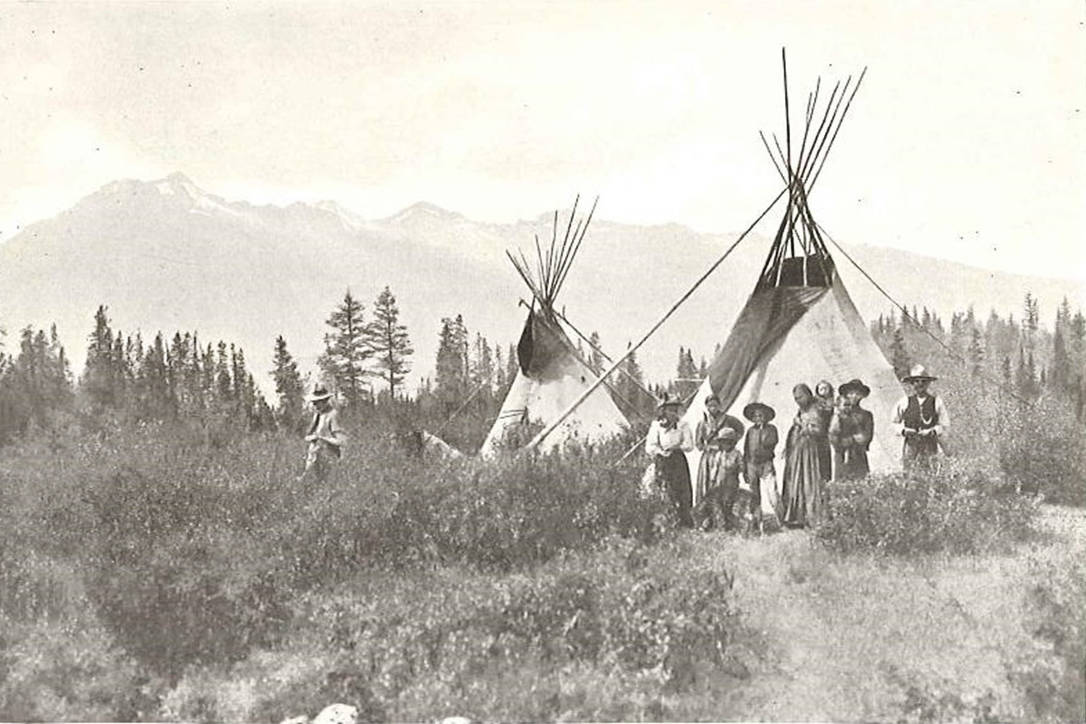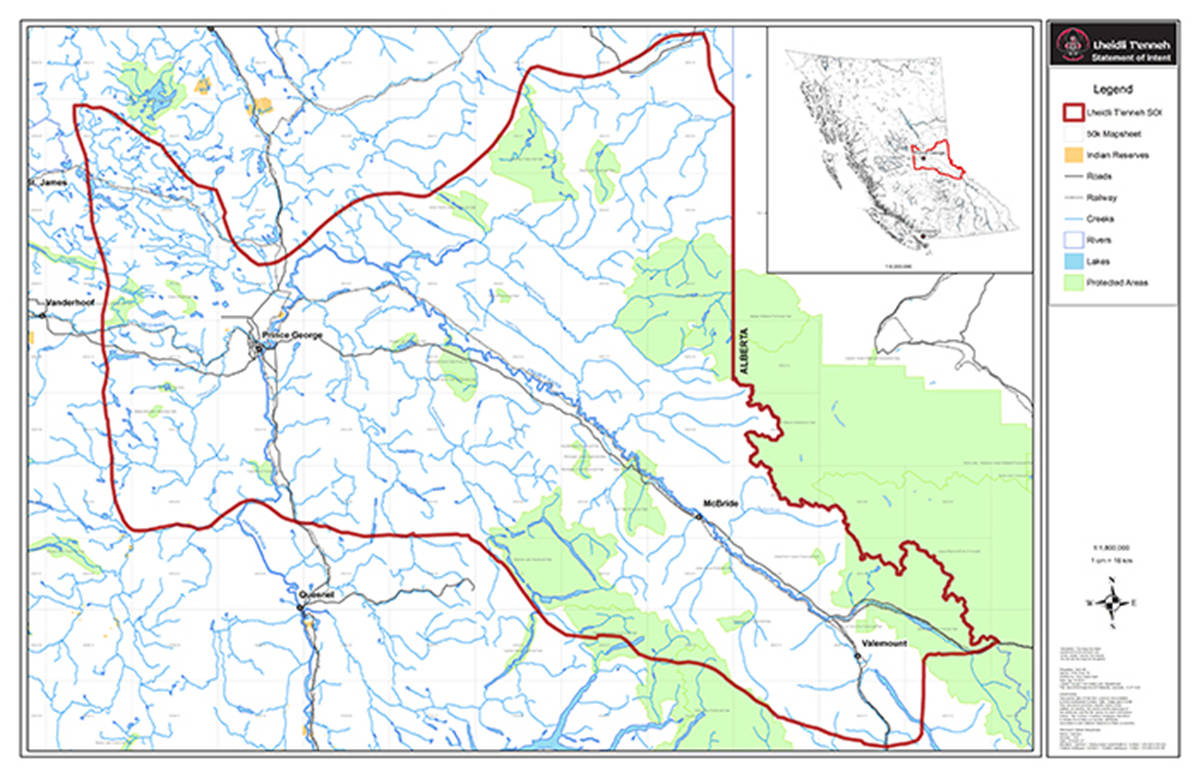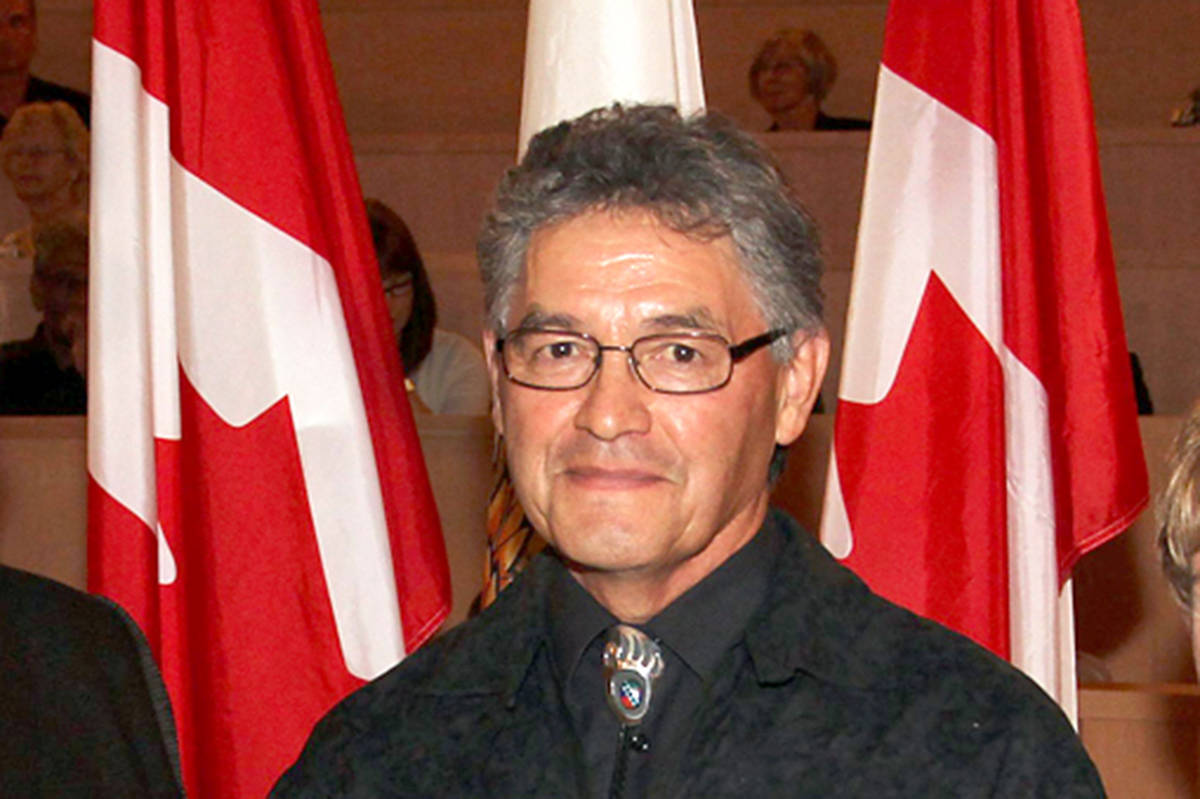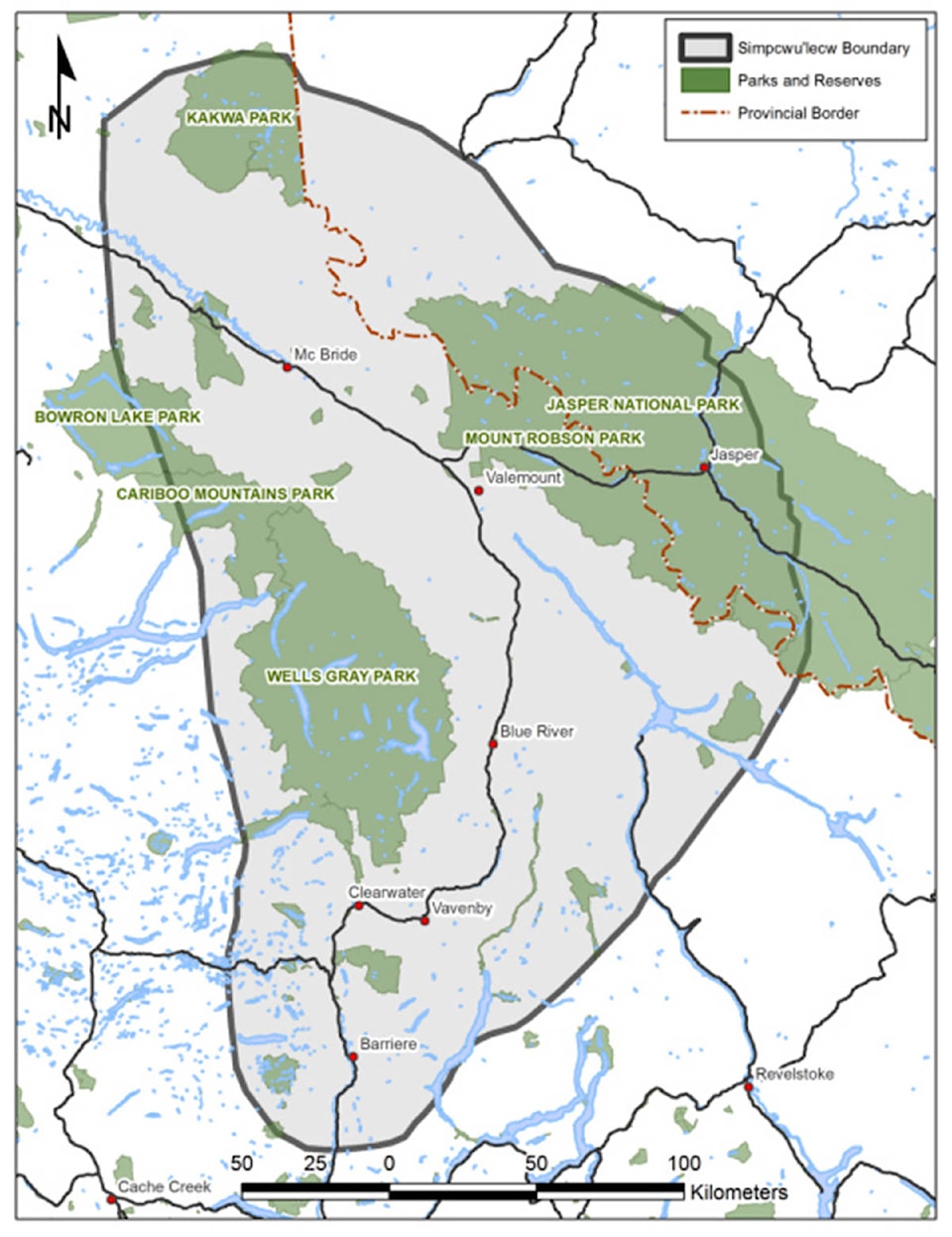Simpcw First Nation states in a media release that it is troubled that the governments of Canada, the Province and Lheidli T’enneh (formerly Fort George Indian Band) held a ceremony to initial a treaty on May 5.
A vote to ratify the treaty is to take place in June.
The proposed Lheidli T’enneh Treaty would include a considerable amount of territory in the Valemount area that the Simpcw consider theirs.
“Canada, the province and Lheidli T’enneh must address our concerns before proceeding with this treaty. Simpcw must be able to rely upon our lands and resources, and must be able to exercise our right to make decisions that protect our lands and resources for this and future generations,” said Simpcw Chief Nathan Matthew.
According to a media release that came out May 8, the treaty encroaches on Simpcwul’ecw, the Simpcw’s ancestral lands.
The release states that Simpcw does not consent to its lands being included in the treaty, and strongly opposes Canada and the province proceeding while Simpcwul’ecw is included. Simpcw has repeatedly asked the Crown and Lheidli T’enneh to provide evidence of Lheidli T’enneh’s relationship to these lands and to engage with Simpcw to resolve these issues. The Simpcw state that no evidence has ever been provided and no process toward resolution has been established.
Matthew said, “The highest court in Canada confirmed in Tsilhqot’in that Aboriginal title is not only about the right to use land and resources, but also the rights to govern and make decisions regarding our lands and resources. This is also clear in the United Nations Declaration of the Rights of Indigenous Peoples.
“Under Secwepemc law, it is Simpcw’s responsibility to protect our homelands, and our fish, wildlife and plants for future generations. Before this Treaty is finalized, any encroachment on our lands, waters and resources, must be resolved,” the chief added.
READ MORE: First Nations history of the North Thompson (Mar. 10, 2018)
According to the Simpcw, the current treaty process is not working. Proceeding to a final agreement without resolving another band’s legitimate concerns is inconsistent with any promises for reconciliation between the Crown and First Nations, the honour of the Crown and the United Nations Declaration of the Rights of Indigenous Peoples.
The Simpcw believe that by ignoring Simpcw’s title and rights, the Crown is ignoring the Truth and Reconciliation Commission’s calls to action. Canada and the Province cannot claim to respect Simpcw on a nation to nation basis and proceed with this Treaty. Simpcw say they seek a resolution.
According to the media release, ignoring Simpcw’s concerns about this encroachment, and celebrating the making of a treaty that disregards their right, is not respectful and will not result in this matter going away. Simpcw say they will continue to use every available avenue to protect Simpcwul’ecw.
According to Wikipedia, in 2006 the Lheidli T’enneh became the first people to initial a treaty with B.C. and Canada within the framework of the British Columbia Treaty Process created in response to the Delgamuukw case.
In 2007, the Treaty 8 First Nations in Alberta sought an injunction to prevent the ratification of the treaty but were denied. The Secwepemc (Shuswap) Nation also launched a similar challenge in 2007.
That same year the Lheidli T’enneh band members turned down the proposed treaty in a vote. Negotiations to develop a new treaty have continued since then.
Lheidli T’enneh, “the people from the confluence of two rivers,” is a Carrier-speaking First Nation that has traditionally occupied and used the land around Prince George, east to the Alberta border.
The main Lheidli T’enneh community is located on the Shelley reserve, which is 20 km northeast of Prince George. The band has 320 members, about 100 of whom live in Shelley. The majority of the other members live in Prince George.
Simpcw First Nation, formerly known as North Thompson Indian Band, currently has 724 members.
Today they mostly live in the community of Chu Chua, which is located about 70 km north of Kamloops.
In 1916 up to 60 Simpcw men, women and children were forced against their will to leave the area around Tete Jaune Cache and walk hundreds of kilometres to Chu Chua.
In 2016 a group of Simpcw, including several descendants of those evicted 100 years earlier, made a symbolic return to Tete Jaune Cache.
newsroom@clearwatertimes.com
Like us on Facebook and follow us on Twitter



